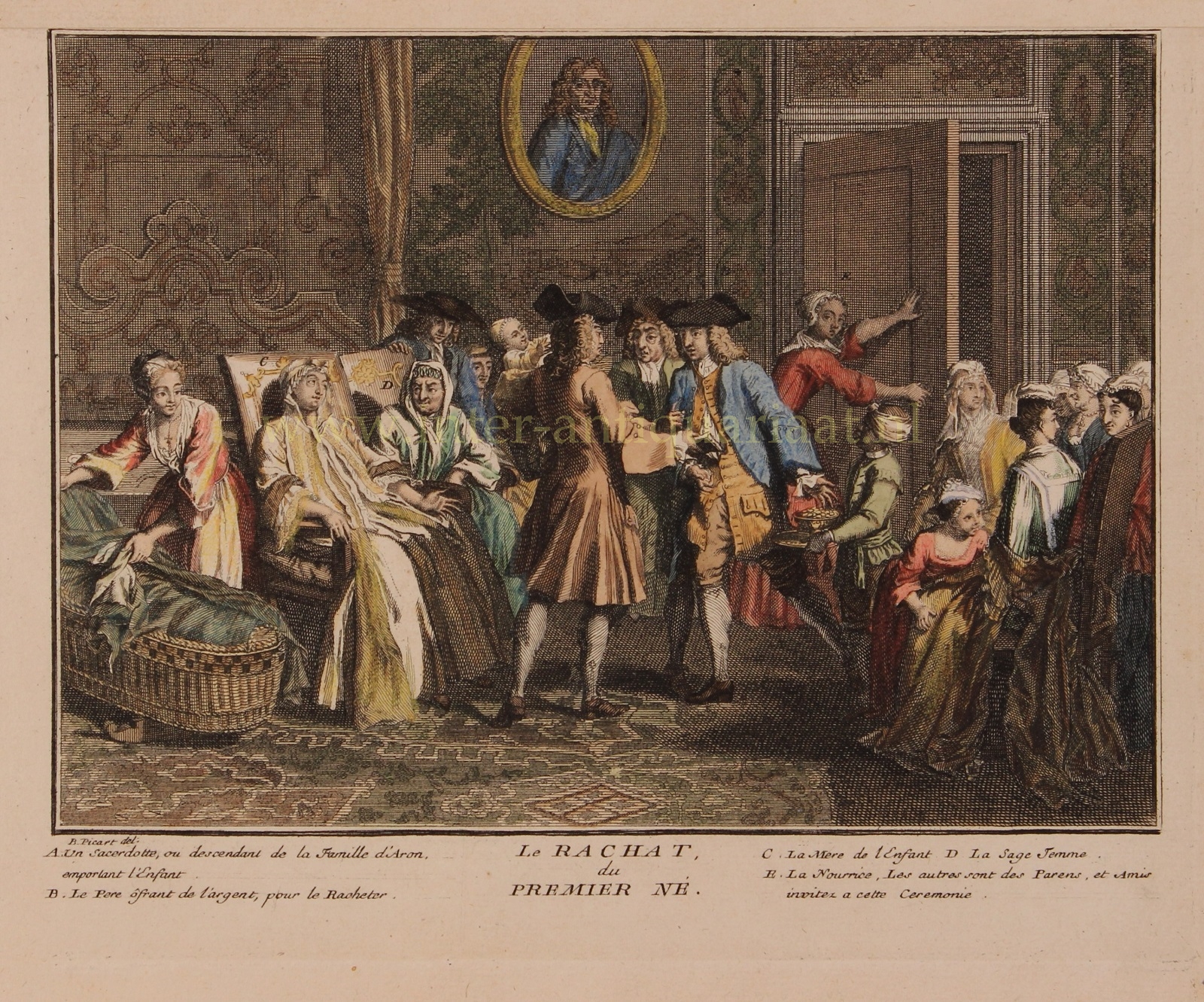“Le rachat du premier né” [the redemption of the first-born], copper engraving made in 1725 by Bernard Picard for his “Cérémonies et coutumes religieuses de tous les peuples du monde”. Coloured by a later hand. Size: (plate): 16,5 x 21,5 cm.
According to Jewish tradition, every firstborn (son) belongs to God because God protected the Jews from the Tenth Plague in which all firstborn died. Because the firstborn belonged to God, they were obliged to serve as a priest. Since the descendants of the high priest Aaron have taken over the function of kohen, the firstborn have since then had to redeem themselves from this obligation. This is done during the pidyon haben ceremony (Hebrew: פדיון הבן). The redemption is attained by paying five silver coins to a kohen, on behalf of one’s firstborn son.
The father brings the child to the kohen. Indicating that this is the Israelite mother’s firstborn son, he has come to redeem him as commanded in the Torah. The kohen asks the father which he would rather have, the child or the five silver shekels which he must pay. The father states that he prefers the child to the money, then he recites a blessing and hands over five silver coins (or an equivalent amount of total silver). The kohen holds the coins over the child and declares that the redemption price is received and accepted in place of the child. He then blesses the child.
The engraving shows us a domestic ceremony among friends and family, The priest carries the child on his arm. The father offers him a bowl of coins. (Detail: the bowl is held by a servant of colour, still a child himself.) The boy’s mother is seated in the chair to the left, next to her a wise old woman. In the background the child’s nanny may close the door.
Price: Euro 325,-


